
Published:
Readtime: 11 min
Every product is carefully selected by our editors and experts. If you buy from a link, we may earn a commission. Learn more. For more information on how we test products, click here.
| Pros | Cons | Verdict |
| Very simple and intuitive device to use, with a wealth of class options available | Takes up a lot of space, isn’t ideal for apartments, and has expensive up-front and subscription costs | If you can afford it, the Peloton Tread is a fantastic bit of premium exercise equipment |
I’ll start this by stating something that I think is pretty important context: I’m not a runner. It’s something that I’ve tried to incorporate into my life for the longest time, but try as I may it has never quite stuck. In saying that, as I get older my health is getting more important to me.
The reality of working almost exclusively behind a computer screen isn’t lost on me. I know that I really do just need to move my body more—it isn’t that simple for everybody, but for me it’d make a huge difference to my day to day life.
Well, after having tested out the Whoop MG earlier this year, followed by a few months synced up with an Apple Watch Series 10, and finding that both actually did get me up and moving I jumped at the chance to try something a bit more robust: Enter the Peloton Tread.
If you aren’t familiar with Peloton, it’s a market leader in the smart exercise equipment space, and delivers a robust and expansive experience to its customers. You can download the Peloton app and get access to hundreds of professional instructor-led classes, from pilates and yoga to full-blown marathon prep, which neatly ties into its dedicated hardware. For a cost, of course, but we’ll get into that below.
Here, I’m testing the Peloton Tread, an utterly gargantuan treadmill that dominated my living room for the past few months. Now, it’s worth noting that during the testing of this device for this review, Peloton stopped selling the Tread model I used here. Instead, it is now selling a revised ‘Cross Training’ model with some new features. That device isn’t the subject of this review, but enough of my focus here is on the Peloton ‘experience’ that I still prospective Peloton customers can learn something here.
Not being a runner myself, I thought I’d approach this review in a slightly different way. Rather than measuring how well the Tread acts as a treadmill—we already know that it works well, there’s a reason it’s a market leader—I figured I’d instead focus on what it feels like to actually use the device as someone who isn’t a dedicated athlete, and how it fit into my life.
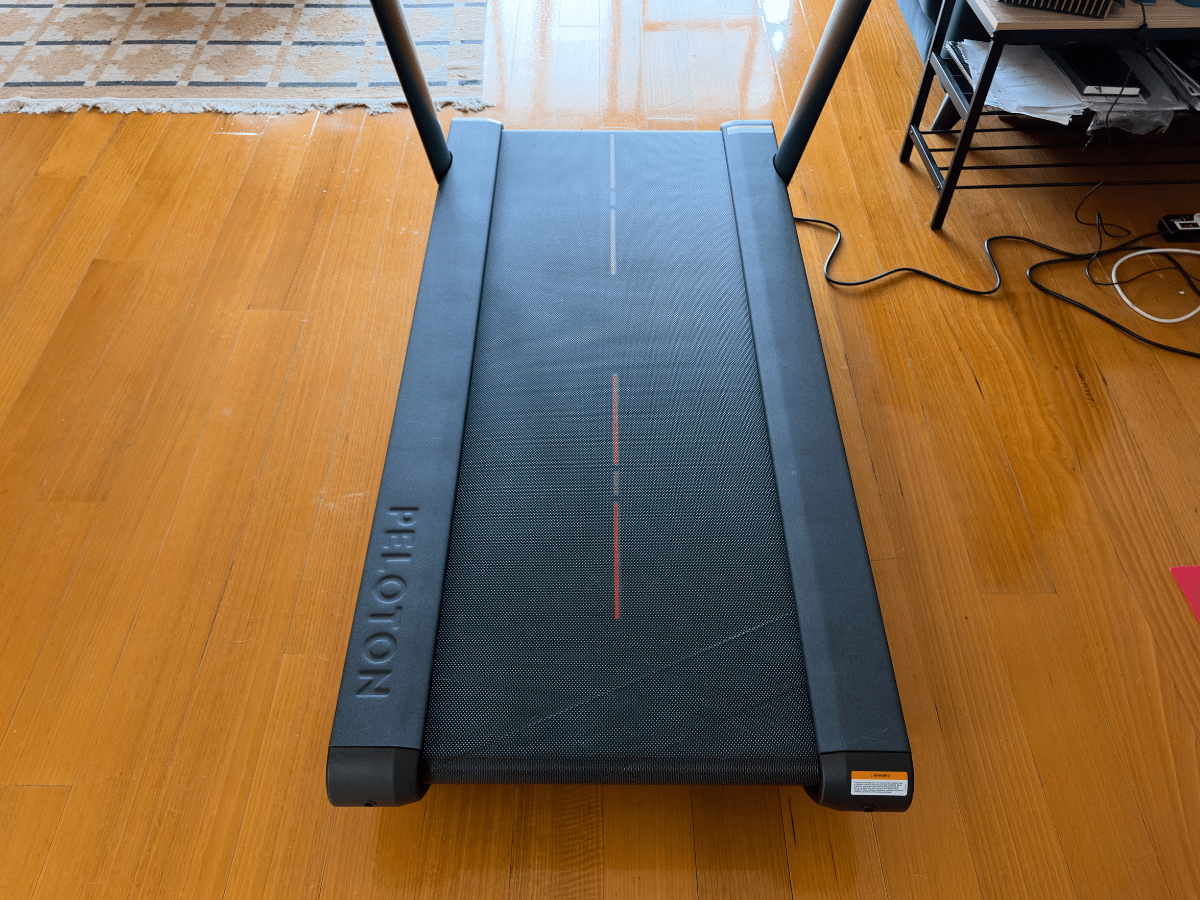
Why Trust Us
Here at Man of Many, we use a wide variety of technology. We’re not fans of any one brand, like to get our hands on the latest-and-greatest tech before we call it the next-best-thing, and we’ve built up extensive experience in reviewing tech as a publication over the past 10 years.
The author of this article, Dean Blake, is Man of Many’s technology and entertainment journalist. He was provided the product by Peloton for the purposes of this review, but no money exchanged hands, and all opinions expressed are those of the author and haven’t been seen by Peloton ahead of time. For more information on our independence, testing and review guidelines, you can read our full editorial policies here.
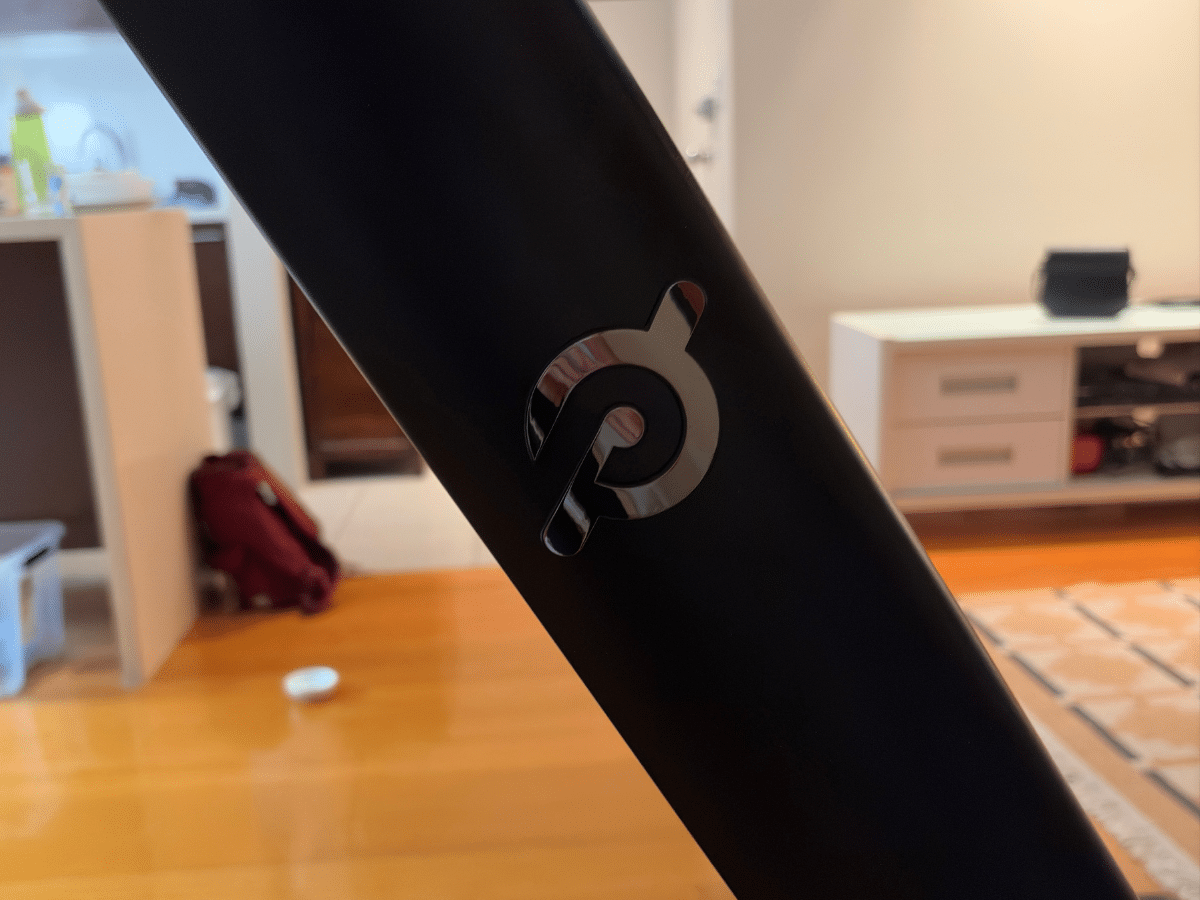
Strong Off the Mark
The first thing to note about the Tread is the sheer size of it. It is not a small treadmill, and requires a lot of space for it to fit and be used safely. The Tread is 173cm long, 84cm wide, and 157 high, and requires at least half a metre of space above the tallest person who will be using the treadmill to ensure running and incline controls don’t leave you head-butting your roof.
Peloton also asks users to keep at least two metres behind the actual device empty (in case you fly off the back, no doubt), which means you’ll be giving up even more of your living room. In a world where more and more people are downsizing into smaller spaces, that hurts.
The good news is that by giving up that space, you’re getting access to an incredibly well built bit of kit. The Tread is very sturdy, solid, and will absolutely not give an inch when you’re on the move. Given this thing costs around AU$5,000, you’d want to hope it’s well built but it’s still worth calling out. I never felt like running on this thing would cause it to give an inch—it’s a very solid foundation for some indoor activities.
The downside? Your downstairs neighbours probably won’t like you very much.
In fact, while I gave the Peloton a good go initially, after some awkward broom-tapping from the people that live under me, I relegated the device to a glorified walking machine for their sake.
That is an immediate issue for those of us living in apartments, and effectively means that using this treadmill has even more requirements: a lot of space, and the right place to put it.
Thankfully, there’s quite a bit more to the Peloton platform than running—it offers strength classes, yoga, meditation, stretching, and other cardio options through a dedicated app—so I had no excuse not to work up a sweat in a way that didn’t make me a pariah to my neighbours.
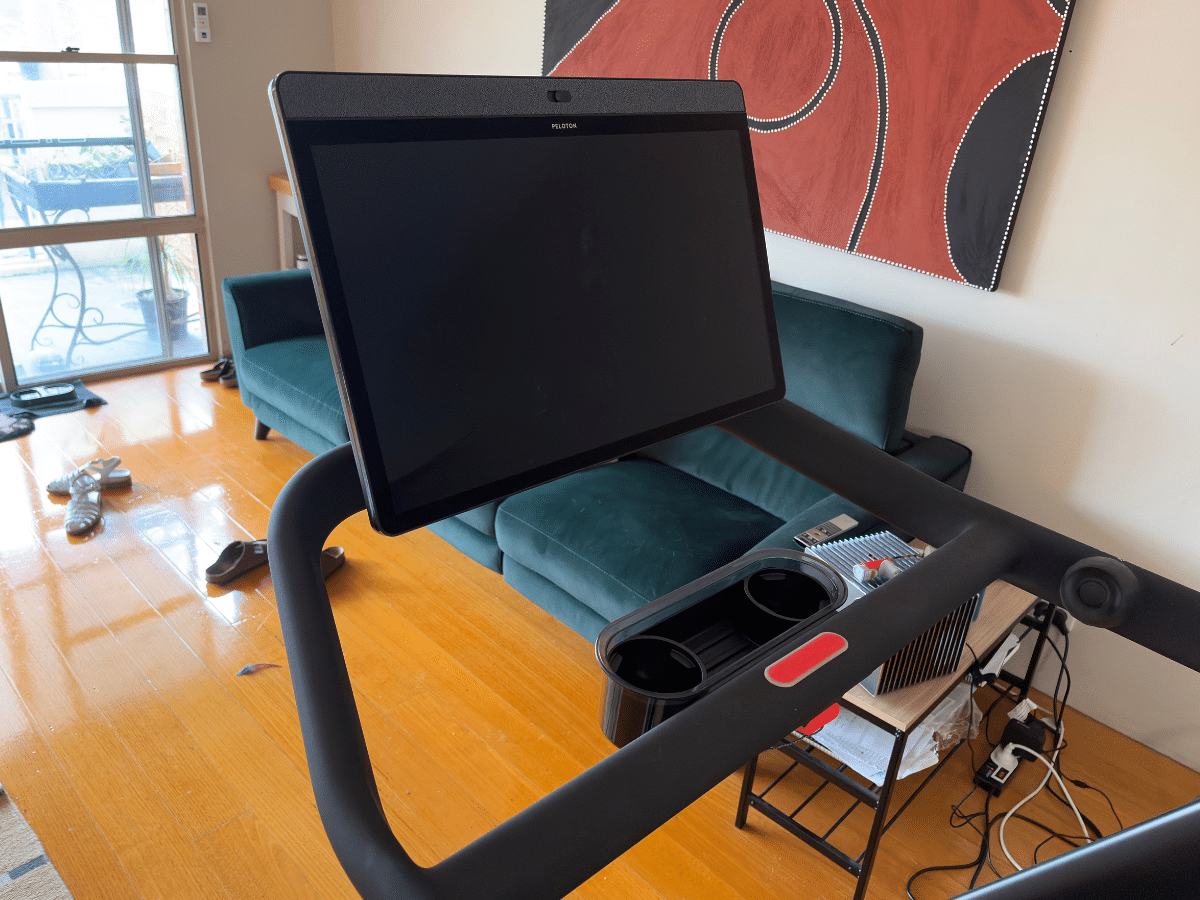
Tactile Controls, Big Screen
Speaking of using the Tread, it is thankfully very simple. It features a big 23.8” touchscreen which is used to initiate runs, load up YouTube videos, plan out which class you’ll be diving into, and more. The newer model’s screen rotates to make it easier to watch these classes while not on the treadmill, making these other use cases a bit more likely.
That library of classes appears somewhat like a streaming service in my eyes, in that you have a seemingly never-ending amount of content to choose from and no real hope of actually getting through it all. That’s fine: the vast array of options here aren’t a checklist of things to accomplish, but rather a massive wealth of options offered in the hopes that you can find something that’ll fit your needs.
You can decide if you want to join a class (some of which are live, and are led by Peloton-employed instructors), or run for a certain distance, or for a certain time, or in a certain place. For example, you might decide you want to run a 10k: plugging that into the device will spit out a bunch of scenic or purpose-built runs that will fit that aim.
If instead you simply want to get in a quick 15 minutes of walking, there are options for you there too.
In terms of controls, it has two very large volume buttons on the side which help control the audio while you’re mid run, and are big enough that you’re not going to have any trouble fiddling with them. You can control the speed of the actual drive belt by way of a tactile control knob on the right hand side of the arm rests, which goes up to 20km/h, with a separate knob on the left hand side to control the incline (which goes up to a 12.5 per cent grade).
I actually love these controls, as they’re massive and easily accessed while in the middle of a class. Moving them a little doesn’t do anything, so you don’t have to worry about accidently knocking them while running, doubling your speed accidentally, and making use of that spare two metres behind you.
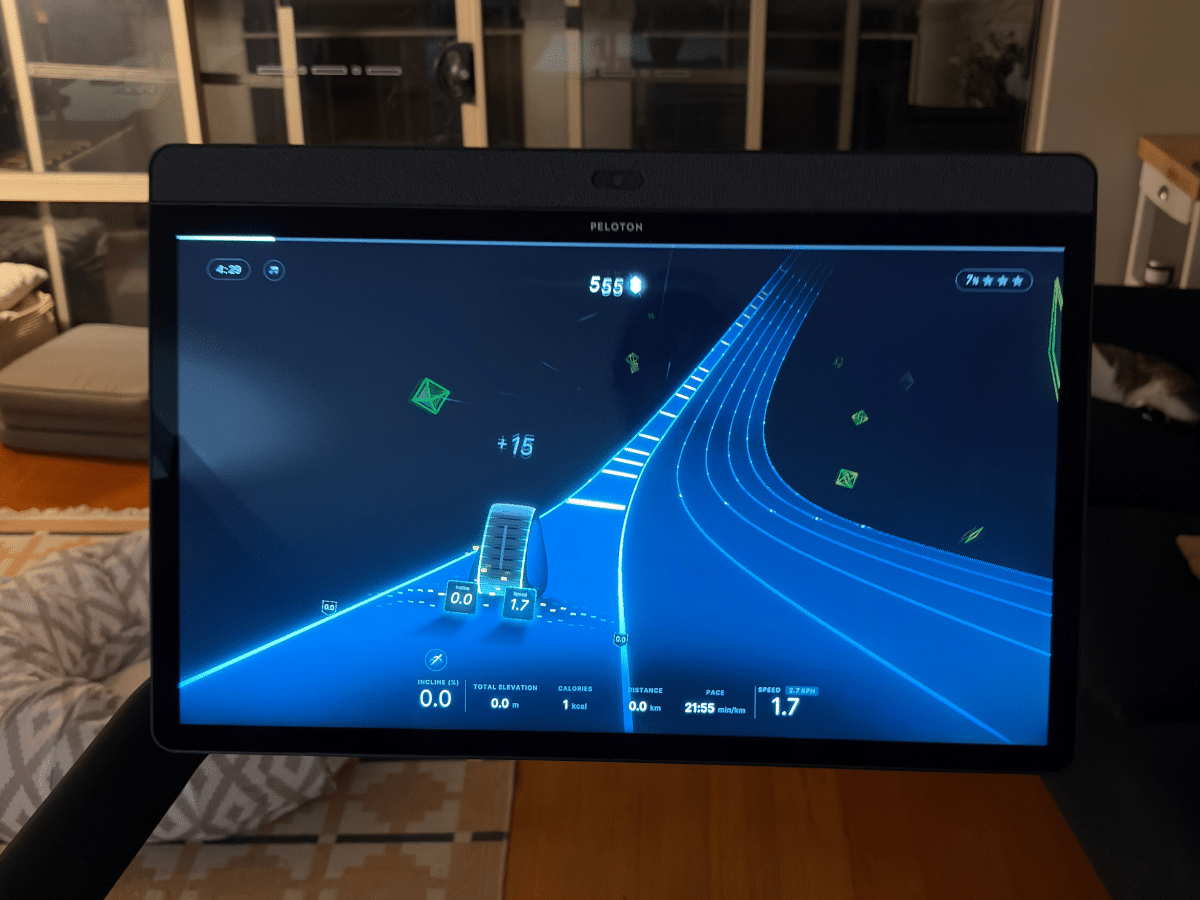
Gamifying Competition
Probably the most interesting part of the Peloton experience for myself, as Man of Many’s dedicated Entertainment and Tech guy, was its ‘gamification’ of running.
‘Lanebreak’ is an activity you access via the Tread which kind-of turns running into a combination of Tron‘s Light Cycle racing and Subway Surfers. It’s a very basic video game where the controller is a treadmill.
You run, or pedal if you’re on a Bike, in the hopes of racking up a high score—moving your avatar using the Tread’s controls to make sure its in the right lane. Being in the right lane awards you more points, so if you want to break into the top of the leaderboards you’ll want to run faster, longer, and make use of the rules of the game to the max.
In fact, effectively every part of the Peloton experience is constantly comparing you to other users with the aim of providing you benchmarks and subtly convincing you to push yourself harder. How are your peers doing? Did they get a better score in Lanebreak? Or work harder in the class you’re currently doing? Or did they take the weekend off to do yoga instead?
I’ve seen people talk about getting personally connected with certain Peloton instructors, and following their classes in the same way someone might form a parasocial relationships with celebrities, influencers, and musicians. That’s odd, but it definitely serves as a way to keep people using the platform—if you have a regular class, with a regular instructor that you learn to love, you’re probably more likely to build up that habit and exercise more.
Now—did this make me, personally, want to run and exercise more? No. I’m not someone that is driven by outdoing other people, and I’m more interesting in using a platform in a way that works for me than in a way that puts me up against people with entirely different fitness levels than my own.
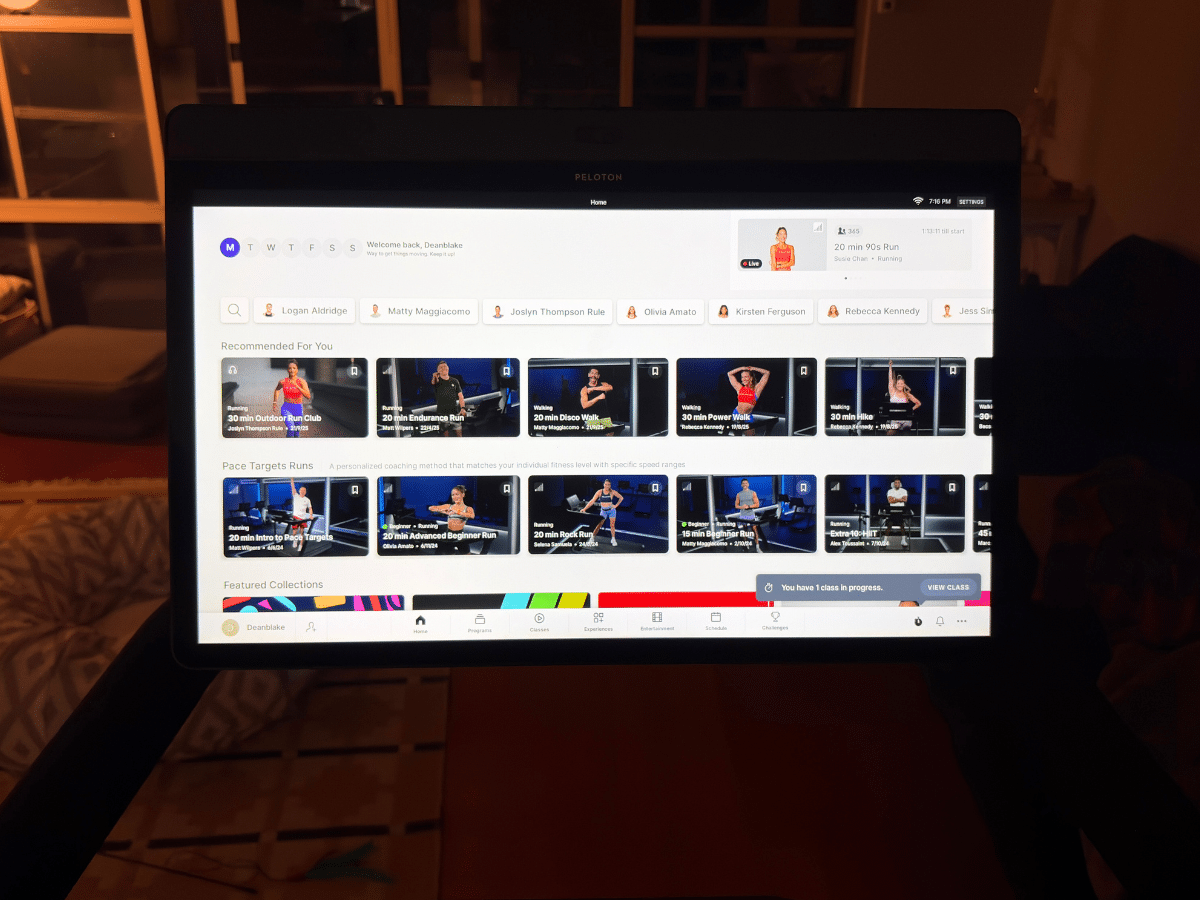
Pay-to-Run
So getting yourself into an activity is relatively easy, using the system is simple and comfortable, and there’s a wealth of activities to choose from. Sounds great! Well, that isn’t the end of the conversation.
The Tread costs AU$4,999, with a number of add-ons you can also buy at checkout (like Peloton-branded dumbbells and yoga mats) if you’re literally starting from zero. From there, you’ll also need to pay an ongoing AU$65 per month subscription to get access to the vast majority of what I’ve talked about in this review.
There are some things you’ll get for free, but the bulk of the service is locked behind this subscription. You can get cheaper subscriptions if you can live without Peloton’s specific hardware, but in order to activate and use this particular bit of kit you need that expensive subscription.
AU$65 a month is not nothing—in fact, it adds up to a total ongoing cost of AU$780 a year. It’s also about three times the cost of the most expensive Netflix subscription: maybe it’s not fair to compare those things, since one is encouraging you to get up and move and the other is encouraging a more sedentary lifestyle, but the reality is that any responsible adult has to weigh every expense you have against one another to decide what is worth your time and money.
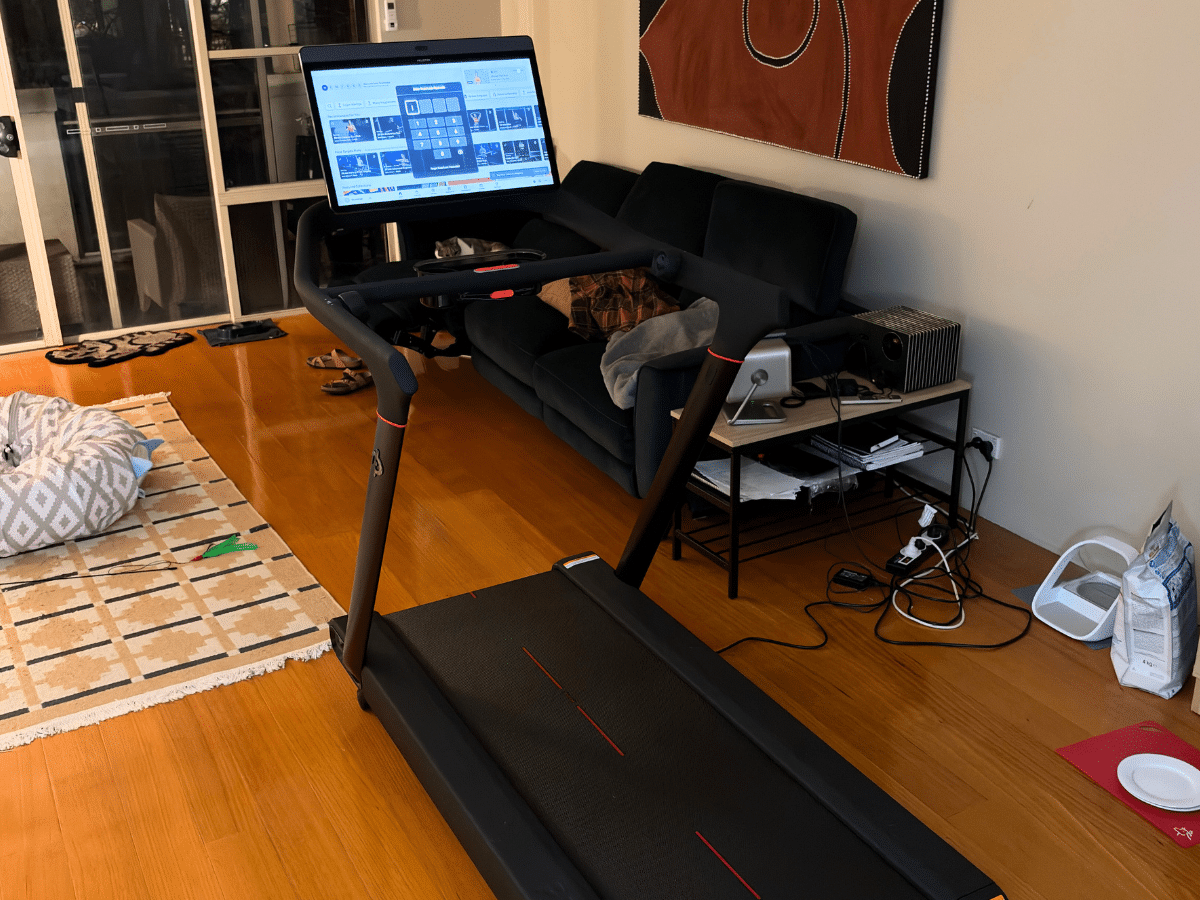
Man of Many’s Verdict
If you’re a hardcore runner, and ultimately decide that the treadmill you’ve been using for a while isn’t cutting it, and you have the space and money to spare, I think the Peloton Tread is a very solid solution to your problem.
But for most people? I think it’s overkill.
It is a very premium product with an ongoing premium price tag. If you can overcome these barriers, you’ll get an excellent bit of exercise equipment, as well as the impressive Peloton software that legitimately tries to get you more active—using all the gamification tricks it can to get you invested.
But, if that doesn’t sound necessary to you, I can’t fault you for deciding to just go for a walk instead.
Disclosure: Dean Blake was provided the product by Peloton for the purposes of this review, but no money exchanged hands, and all opinions expressed are those of the author and haven’t been seen by Peloton ahead of time. For more information on our independence, testing and review guidelines, you can read our full editorial policies here.
















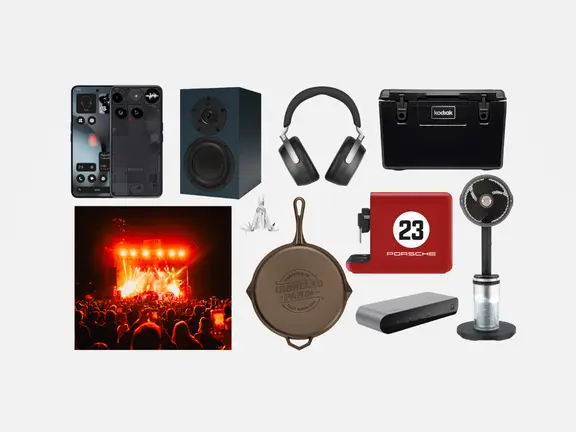













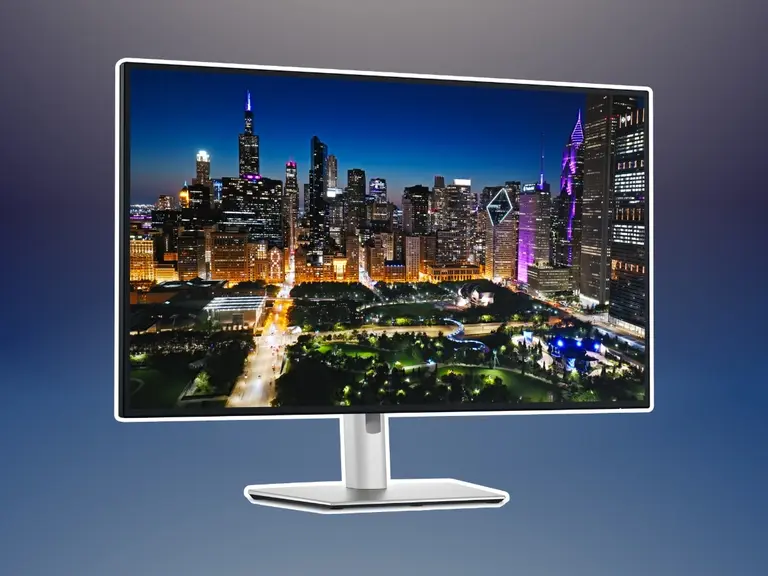



Comments
We love hearing from you. or to leave a comment.